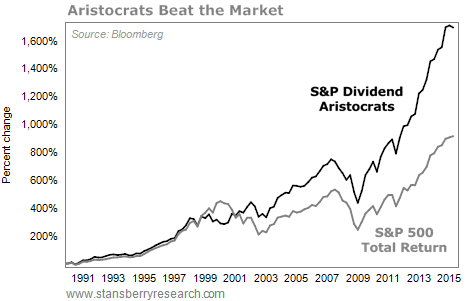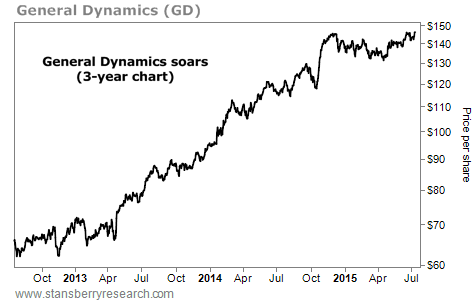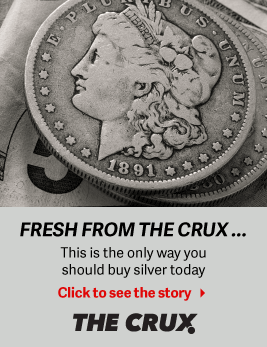| Home | About Us | Resources | Archive | Free Reports | Market Window |
The Ultimate Cheat Sheet to Find the World's Best Dividend StocksBy
Wednesday, July 15, 2015
If paying real cash to shareholders repeatedly is the sign of a strong business, paying more and more cash each year is perhaps the strongest sign of all...
Last week, I shared the cure for stock market volatility... and explained the importance of collecting steady dividend payments.
In short, stock prices may go up or down. But if you invest in a special type of dividend stock, the income streams only go in one direction: Up. And they go up year after year, no matter what crisis the news is talking up this week.
So... How do you find these stocks?
Luckily, all it takes is the simple click of a mouse. Below, I'll show you a simple dividend-investing shortcut that will help you find the world's greatest dividend stocks...
Let's get started...
Financial services and research giant Standard and Poor's (S&P) maintains an index of companies that have not only paid consistent dividends, but have increased their dividend payment each year for the past 25 years. They are called the "Dividend Aristocrats."
And for investors who reinvest dividends, this effect of growing dividends is even stronger. You are taking dividends to buy more shares of a company that is constantly paying bigger dividends... with which you can then buy even more shares.
As a result, the index outperforms the market handily...
 Each of the 52 Dividend Aristocrats are large and well-established members of the S&P 500, with an average market cap of $64 billion. The index includes many names you may know from your daily life, like meat maker Hormel Foods (HRL), spice maker McCormick (MKC) or tool maker Stanley Black & Decker (SWK). You can gain quick exposure to all of the Dividend Aristocrats by purchasing the ProShares S&P 500 Dividend Aristocrats Fund (NOBL). The fund has low turnover, a relatively low expense ratio of 0.35%, and currently yields 1.6%.
If you're looking for individual stock ideas, the list of Dividend Aristocrats is a great place to start. While S&P itself won't give you the full list (they want you to pay for it), the ProShares fund has to disclose all of its holdings. So you can find the current Dividend Aristocrats by clicking here.
S&P also tracks a more aggressive index called the "High Yield Dividend Aristocrats." This list tracks stocks that have raised their dividends for at least 20 years, and it expands its pool to include smaller companies that are in the S&P 1500.
That means the average market cap drops to $38 billion, with some as small as $2.1 billion. With smaller stocks in play, this group is riskier than the traditional Dividend Aristocrats, but it pays a higher yield at 2%. You can use the SPDR S&P Dividend Fund (SDY) to invest in these stocks with a 0.35% expense ratio.
As I said last week, collecting dividends should be a central feature of your investment philosophy... Understanding how they work and how to evaluate them is the first step to becoming a successful investor.
If you're looking for a one-stop shop when it comes to dividend investing, the funds I mention above are a great place to start. And simply taking a look at their holdings is the ultimate "cheat sheet" for discovering the best dividend stocks in the world.
Here's to our health, wealth, and a great retirement,
Dr. David Eifrig
Further Reading:
"Protecting yourself from Wall Street's convoluted shell games is simple," Doc says. "Demand a cash dividend from your investments." It's the simplest, most effective way to fight back. Learn more about the importance of dividends in this classic essay.
And if you're looking for safe dividend income over the next few years, Doc says one sector is ripe with value. "If you're interested in earning dividends in 2015, it's worth hearing what this indicator has to say," he says. "It can help you safely earn a substantial amount of income with one of the market's cheapest sectors." Learn more here.
Market NotesMORE PROOF THE "OFFENSE" SECTOR IS ALIVE AND WELL The U.S. government is still spending money on "offense"... and today's chart offers the latest proof.
Regular readers know we've said that the U.S. is involved in so many foreign wars that defense contractors should be called "offense" contractors. Many analysts have warned against investing in this industry... due to an expected reduction in government spending.
That reduction hasn't come... and today, we turn to "offense" contractor General Dynamics (GD) as the latest example. The company's four main business segments are aerospace, marine systems, combat systems, and information and technology. And it produces things like jet fighters, missiles, tanks, and other combat vehicles.
As you can see below, GD's shareholders have benefited from steady U.S. spending... Shares have risen 130% over the past three years and just struck a new all-time high. For better or worse, the bull market in government spending is on... and "offense" contractors like GD are profiting.
 |
Recent Articles
|



